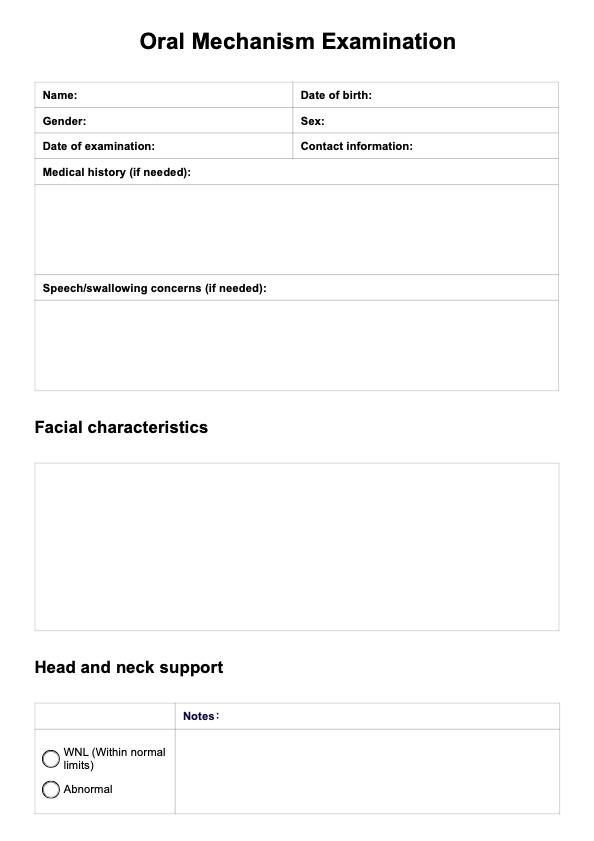The protocol of the oral mechanism involves a systematic assessment of oral structures and functions, including observation, palpation, range of motion evaluation, and functional tasks.

Oral Mechanism Examination
Unlock precise diagnosis & personalized treatment with our Oral Mechanism Examination—a comprehensive assessment for speech & swallowing concerns. Download now!
Oral Mechanism Examination Template
Commonly asked questions
The complete oral mechanism exam with cranial nerves assesses full oral motor function along with the function of cranial nerves responsible for speech and swallowing, such as the trigeminal (V), facial (VII), glossopharyngeal (IX), and hypoglossal (XII) nerves.
The checklist for the Oro and oral motor exam typically includes items such as lip closure, tongue movement, sucking and swallowing reflexes, oral sensation awareness, and coordination of oral movements during speech and feeding tasks.
EHR and practice management software
Get started for free
*No credit card required
Free
$0/usd
Unlimited clients
Telehealth
1GB of storage
Client portal text
Automated billing and online payments











